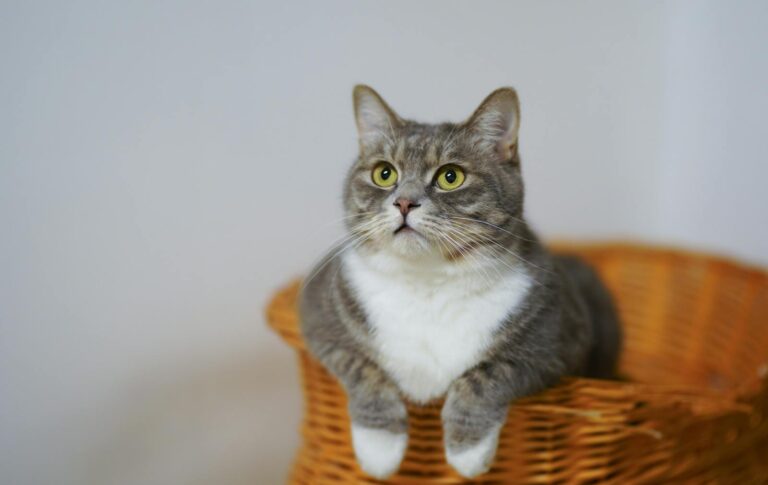How Often Should You Change Your Cat’s Food Brand or Formula? – A Comprehensive Guide
Determining how often should you change your cat’s food brand or formula? is crucial for maintaining your feline companion’s health and well-being. Cats can be finicky eaters, and their dietary needs can vary significantly throughout their lives. This article delves into the importance of cat food stability, potential risks of frequent changes, signs that your cat may benefit from a change, how to safely transition between foods, when specific formula changes are necessary, and the importance of consulting your veterinarian.
Understanding the Importance of Cat Food Stability
The Role of Nutrition in Cat Health
Cats have unique nutritional requirements that are vital for their overall health. Unlike dogs, cats are obligate carnivores, meaning they require certain nutrients that can only be obtained through animal-based proteins. Their diets must be balanced with an appropriate mix of proteins, fats, vitamins, and minerals.
When introducing new cat food brands or formulas, it’s essential to consider how these changes impact your cat’s diet. Sudden shifts can disrupt their digestive systems, leading to gastrointestinal issues and nutritional deficits. Understanding the role of stable nutrition means recognizing how fluctuations could affect energy levels, coat quality, and overall vitality.
The Importance of Consistency
Consistency in your cat’s diet fosters familiarity and comfort. Cats thrive on routine, and changes in their food can lead to stress and anxiety. The familiar smell and texture of their food can provide emotional stability, which is particularly important for more sensitive felines.
Moreover, regularity helps monitor health indicators such as weight, fur quality, and litter box habits. Any sudden change in these patterns might indicate an adverse reaction to a new food brand. By sticking to a consistent diet, pet owners can maintain better control over their cat’s health metrics.
Long-Term Health Implications
Long-term consumption of a well-selected cat food brand ensures that your cat receives a balanced diet tailored to their life stage—kitten, adult, or senior. Each stage has different nutrient demands, and changing brands frequently risks depriving them of essential components over time.
For instance, kitten formulas are protein-rich to support rapid growth, while senior diets may include joint health supplements. Shifting without proper planning could lead to deficiencies or excesses, potentially resulting in long-term health complications.
Potential Risks of Frequent Cat Food Changes
Gastrointestinal Disturbances
One of the most immediate risks associated with changing a cat’s food too frequently is gastrointestinal disturbances. Cats are not built to handle abrupt transitions in their diets. When you switch brands suddenly, your cat might experience symptoms such as vomiting, diarrhea, or constipation.
These digestive issues can lead to further complications if not addressed promptly. Prolonged gastrointestinal upset can result in dehydration and other serious health problems. It’s crucial for any cat owner to recognize that a gradual transition is typically recommended to minimize these risks.
Allergies and Intolerances
Cars can develop food allergies or sensitivities at any stage of life. When you frequently change their food, you increase the likelihood that they will encounter an allergenic ingredient. Common allergens include beef, chicken, dairy, and grains.
If your cat develops a sensitivity, they may exhibit symptoms like itching, skin irritations, or digestive upsets. Identifying the offending ingredient can become challenging if numerous brands or formulas have been tried. Therefore, understanding how often to change and carefully observing your cat during transitions is essential in reducing allergy risks.
Behavioral Issues
Frequent food changes can confuse your cat, leading to behavioral issues such as anxiety. Cats are creatures of habit, and abrupt alterations can cause significant stress. For example, a cat accustomed to a particular feeding schedule might refuse to eat when presented with a new food, leading to hunger-related frustration.
Stress can manifest in various ways, including hiding, aggressive behavior towards humans or other pets, and changes in grooming habits. By minimizing unnecessary changes, you can help maintain your cat’s mental well-being alongside physical health.
Signs Your Cat May Benefit from a Food Change
Weight Changes
Monitoring your cat’s weight is one of the primary indicators of whether they might need a food change. If your cat is gaining weight despite a consistent feeding regimen, it may be time to assess the calorie content of the food. Transitioning to a weight management formula might be beneficial.
Conversely, if your cat is losing weight unexpectedly, this could signify a more urgent issue that warrants dietary adjustments. They may require higher-calorie foods or those formulated for specific health concerns.
Litter Box Changes
Your cat’s litter box habits can provide insight into their digestive health. If you notice changes in stool consistency—such as increased frequency, diarrhea, or straining during elimination—it may indicate that their current food is not suiting their digestive system.
Similarly, if your cat begins to avoid the litter box or shows signs of discomfort while using it, a food change could be a necessary step. Observing these behaviors closely helps pet owners determine if it’s time to adjust the diet.
Skin and Coat Quality
A cat’s skin and coat condition are often reflective of their overall health and nutritional intake. Dull fur, excessive shedding, or bald patches can indicate underlying deficiencies in their diet. Omega fatty acids, proteins, and vitamins play a critical role in maintaining healthy skin and a shiny coat.
If your cat’s fur appears unhealthy despite regular grooming and care, switching to a premium formula with specialized nutrients might be worthwhile. The right food can lead to noticeable improvements in coat quality within weeks.
Gradual Transition: Safely Switching Cat Food Brands
The 7-10 Day Rule
The most effective method for transitioning your cat to a new brand of food is through a gradual introduction over a period of 7-10 days. This allows your cat’s digestive system to adapt to the new ingredients without causing undue stress or discomfort.
Start by mixing a small portion of the new food with the old food. Gradually increase the ratio of the new food while decreasing the old one. By the end of the transition period, your cat should be eating 100% of the new product, allowing you to monitor their response along the way.
Monitoring Your Cat’s Reaction
As you implement the gradual transition, keeping a close eye on your cat’s behavior and health is crucial. Look out for signs of distress, such as vomiting or changes in litter box habits. If any adverse reactions occur, consult with your veterinarian before continuing with the transition.
Additionally, pay attention to your cat’s appetite. If they’re refusing to eat the new food after several days, consider slowing down the transition process. It’s essential that the switch feels comfortable for them.
Tips for Making the Process Easier
Making the transition process easier can help reduce stress for both you and your cat. Here are some tips:
- Choose a Similar Flavor: Select a new food that mirrors the flavor profile and texture of their current brand to ease the transition.
- Use Treats Wisely: Offering a few treats made with the same ingredients as the new food can help create positive associations.
- Create a Calm Environment: Ensure a quiet space during mealtime free from distractions to encourage your cat to try the new food.
- Maintain Feeding Schedule: Stick to a regular feeding schedule, as this predictability can help alleviate anxiety surrounding food changes.
When a Specific Formula Change Becomes Necessary
Age-Related Dietary Needs
As cats age, their nutritional needs evolve. Kittens require food rich in calories and protein to support growth, while older cats may benefit from diets designed to assist with joint health, digestion, and skin care.
Transitioning to a suitable formula as your cat ages ensures they receive the correct balance of nutrients for maintaining optimal health. Consult your veterinarian about the best timing and type of food to introduce based on your cat’s age.
Health Concerns and Special Diets
Certain medical conditions necessitate dietary modifications. Conditions like diabetes, kidney disease, or obesity require specific formulations that cater to these challenges. In such cases, consulting your veterinarian is imperative to ensure that your cat receives tailored nutrition.
Some common dietary adjustments include:
- Prescription diets for managing chronic illnesses.
- Low-carb options for diabetic cats.
- High-fiber formulas for weight management.
Understanding your cat’s health status is vital in determining when to change their food and ensuring they receive the necessary care.
Environmental Factors
Environmental changes, such as moving homes or introducing a new pet, can also prompt dietary adjustments. Cats are sensitive to their surroundings, and stress can alter their eating habits. In such scenarios, a shift in food might help address anxiety and restore normalcy.
Consider foods that promote calmness, such as those enriched with calming ingredients or herbal supplements. These options can help mitigate stress responses linked to environmental changes.
Consulting Your Veterinarian About Your Cat’s Diet
Importance of Professional Guidance
While it can be tempting to make dietary decisions based on trends or anecdotal evidence, your veterinarian is an invaluable resource. They can provide personalized recommendations based on your cat’s unique health profile, age, and lifestyle.
Consulting professionals ensures that your cat’s dietary choices align with their health needs. Should you contemplate a change in food brand or formula, having a discussion with your vet about your motivations and observations is prudent.
Regular Check-Ups
Regular veterinary check-ups are essential to monitor your cat’s health and make informed decisions regarding their diet. During these visits, you can discuss any concerns about weight fluctuation, coat condition, or digestive issues. Your vet can advise whether a food change is warranted.
They may also recommend periodic blood tests to assess your cat’s health and identify any deficiencies that a simple dietary switch may not address. Keeping communication open with your veterinarian strengthens your ability to make informed decisions about your cat’s nutrition.
Nutritional Education
Educating yourself about pet nutrition is equally important. Familiarize yourself with the ingredients and nutritional information found on food labels. Understanding what constitutes a high-quality cat food can empower you to make better choices for your feline friend.
Online resources, books, and seminars are excellent starting points for expanding your knowledge about feline nutrition. The more informed you are, the better equipped you’ll be to navigate the nuances of cat food brands and formulas.
Conclusion
In summary, navigating the question of how often should you change your cat’s food brand or formula? involves understanding the importance of nutritional stability, being aware of the potential risks associated with frequent changes, recognizing signs that may indicate your cat needs a diet adjustment, and knowing how to safely transition to new foods. It’s crucial to consult your veterinarian for tailored advice and recommendations to ensure your cat remains healthy and happy throughout their life stages.







